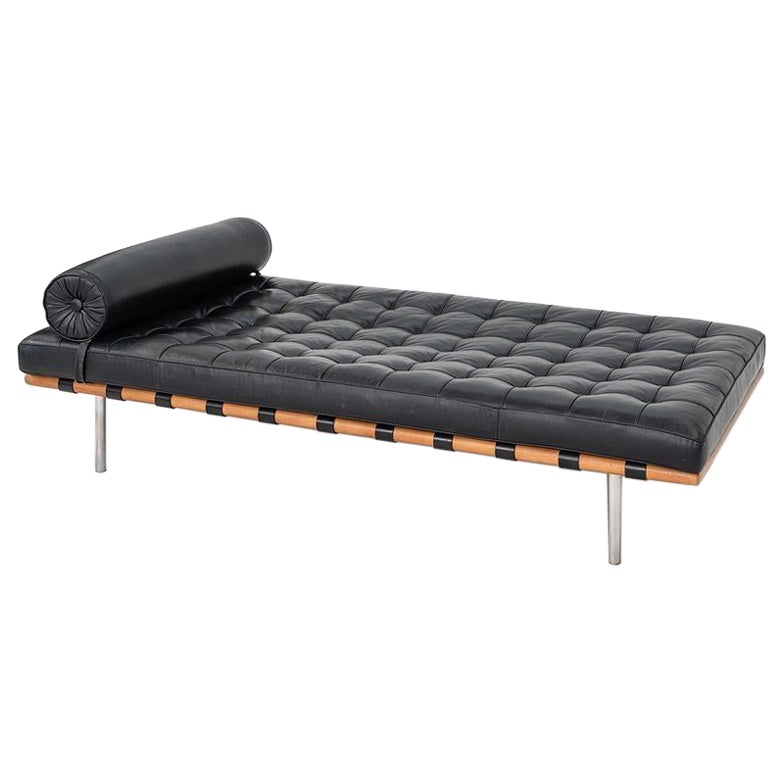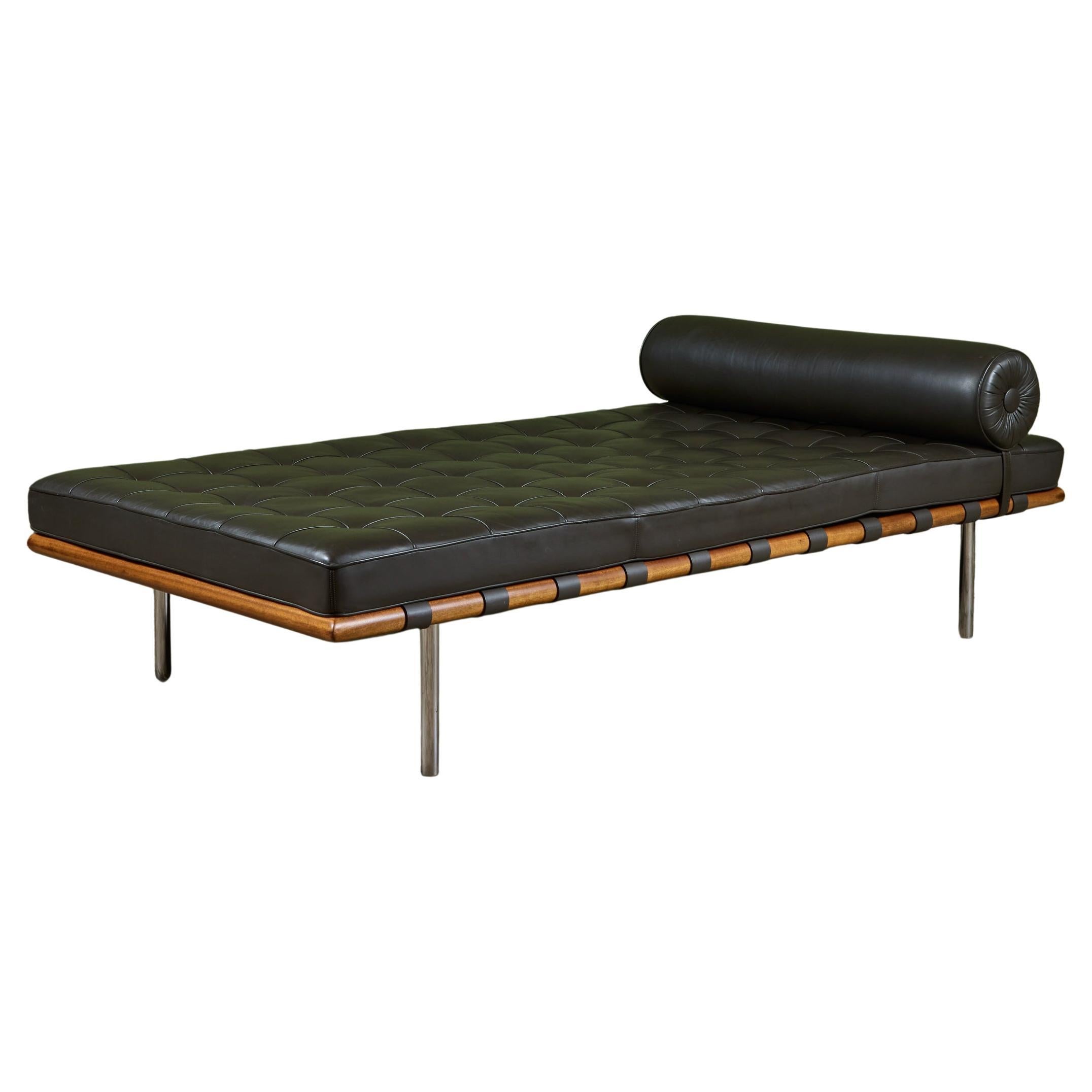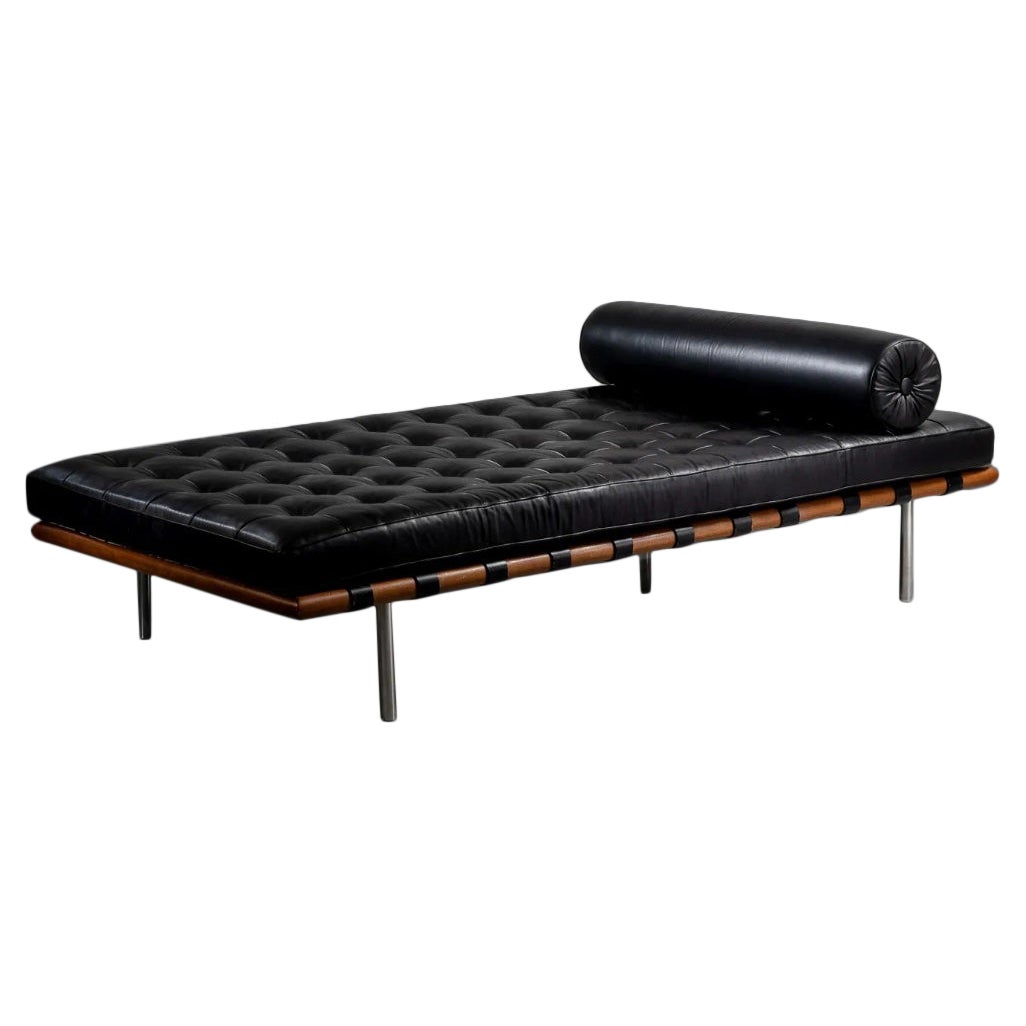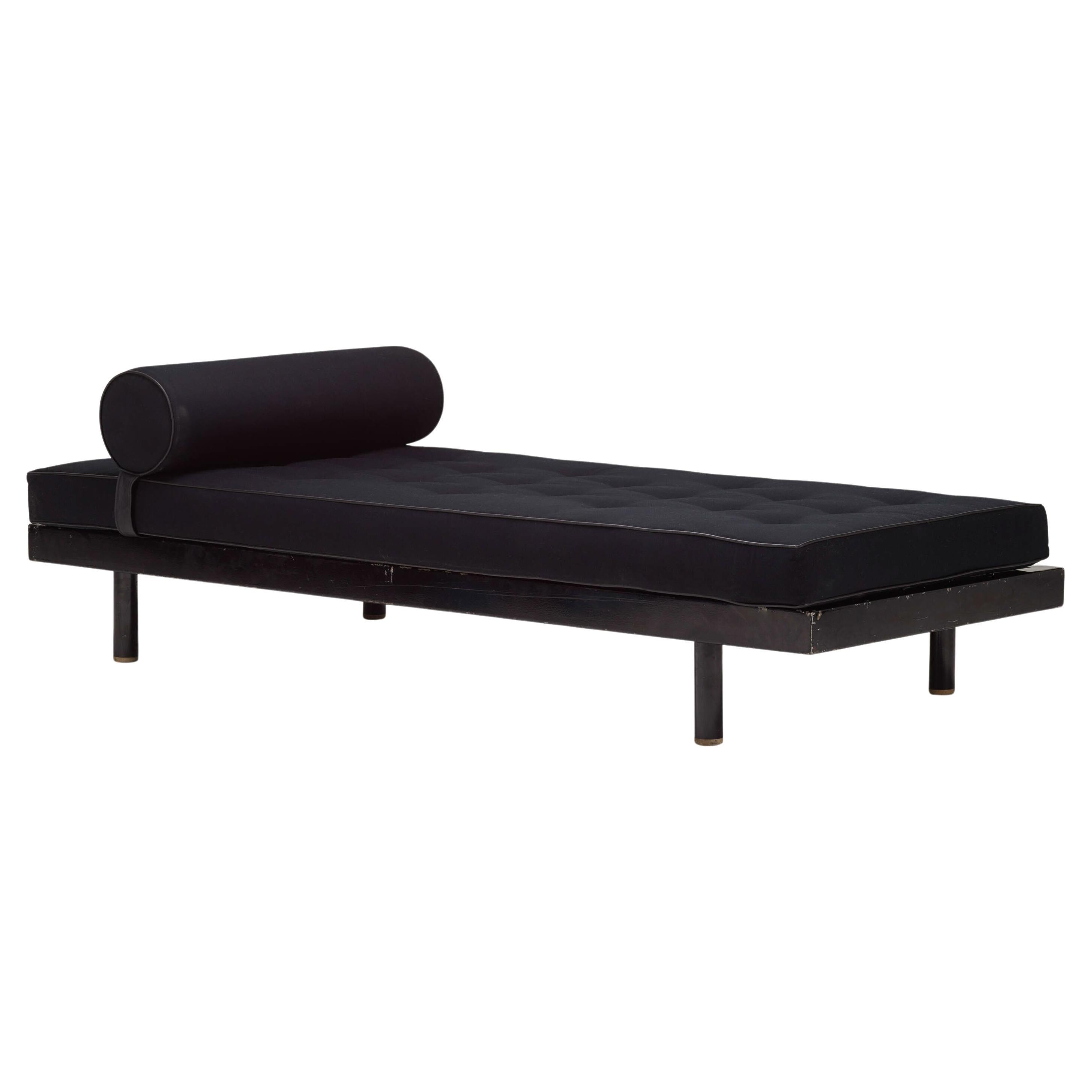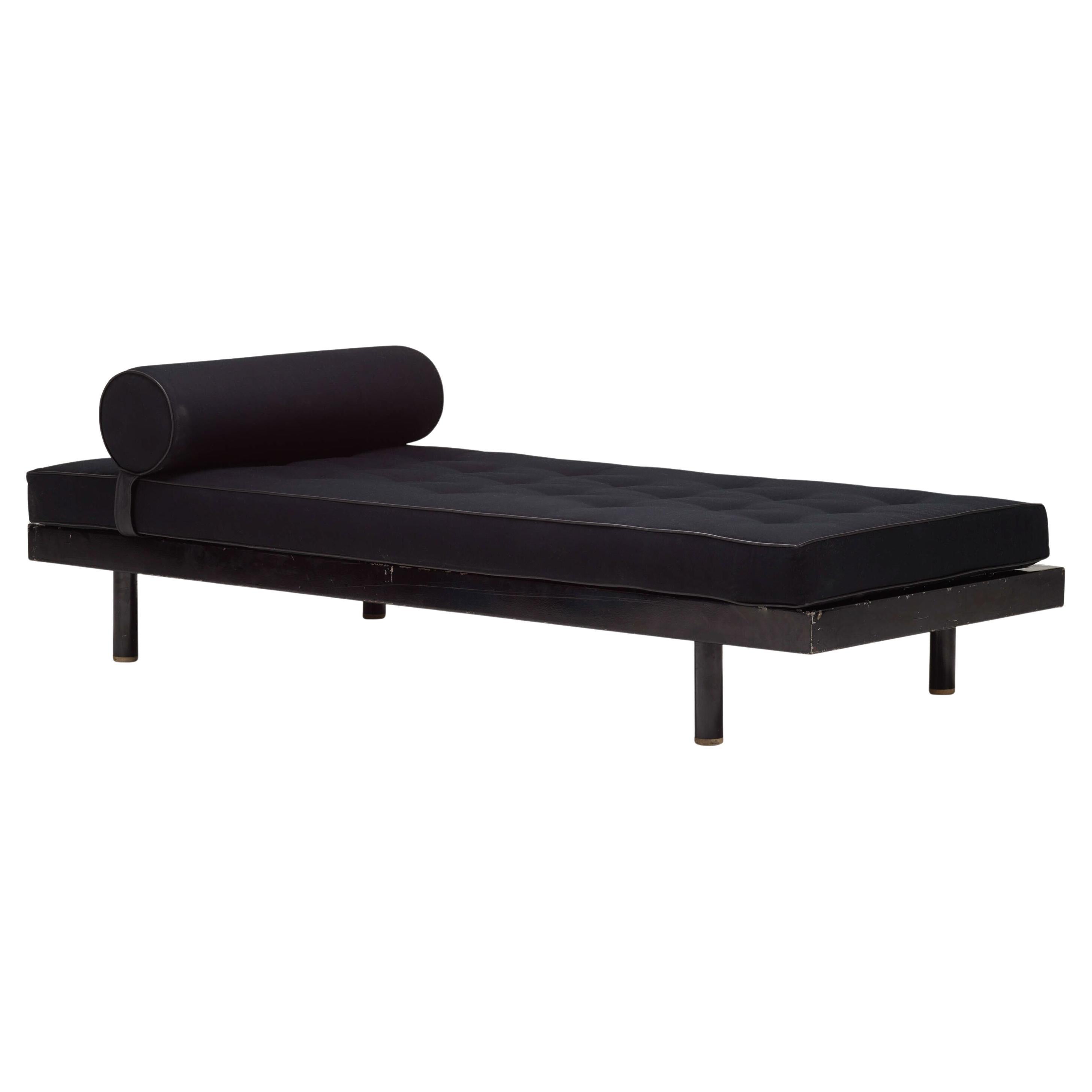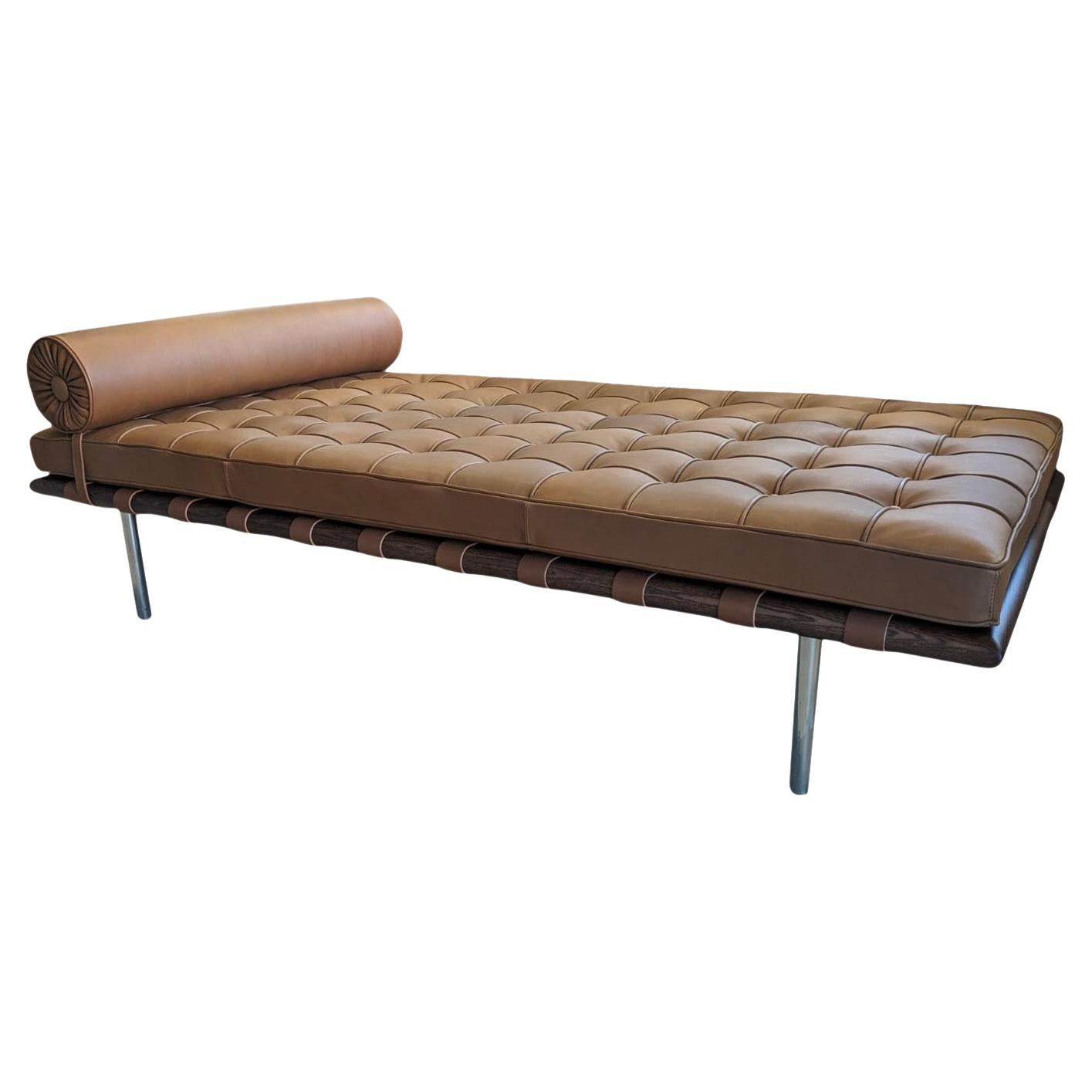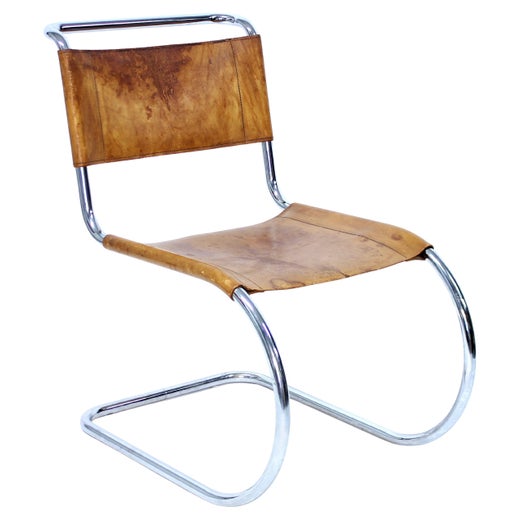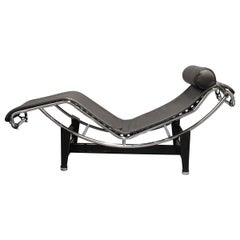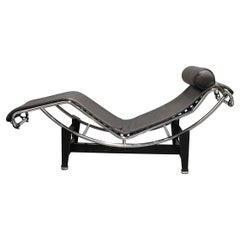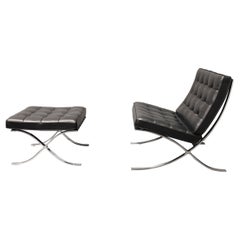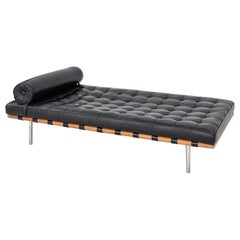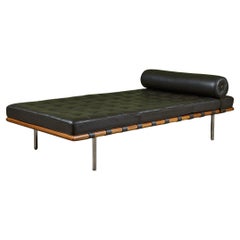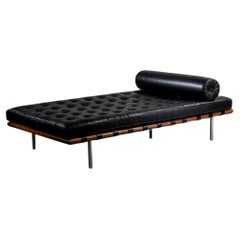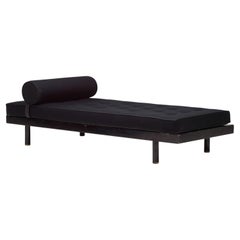Mies van der Rohe for Knoll Barcelona Daybed/Couch in Black Leather
About the Item
- Creator:Ludwig Mies van der Rohe (Designer),Knoll (Maker)
- Design:
- Dimensions:Height: 15.38 in (39.07 cm)Width: 78 in (198.12 cm)Depth: 39 in (99.06 cm)Seat Height: 15.38 in (39.07 cm)
- Style:Mid-Century Modern (Of the Period)
- Materials and Techniques:
- Place of Origin:
- Period:
- Date of Manufacture:1900s
- Condition:Wear consistent with age and use. very nice.
- Seller Location:Dallas, TX
- Reference Number:Seller: #9702351stDibs: LU1078442088612
Barcelona Daybed
With its low profile and clean lines, Ludwig Mies van der Rohe’s (1886–1969) Barcelona daybed (also known as the Pavilion daybed) wholly embodies the minimalist “form follows function” philosophy of the day.
Mies codesigned the daybed as well as a chair by the same name, along with Lilly Reich (1885–1947), his longtime collaborator and wife, in 1929 as part of the German Pavilion (or “Barcelona Pavilion”) at the International Exposition in Barcelona, Spain. At the time, Mies was already established as a prominent German architect and had recently been named the director of the Bauhaus. His contribution to the exposition was a deliberate choice to reinforce Germany’s pre–World War II status as a progressive nation at the forefront of modern design.
Although many other pavilions at the International Exposition were intended to serve as centers of knowledge and education, full of painting and sculpture to be admired and discussed, Mies saw the Barcelona Pavilion as a respite from the activity surrounding it — a useful building, staged with useful furniture, without pretext. In fact, royals, dignitaries, and other important government officials were set to visit the German Pavilion after the exposition’s inauguration for a party, which meant the furniture took center stage as the group held court.
While there’s no question of Mies’s authorship of the Barcelona daybed and chair, he wasn’t without help. Reich, a German furniture designer in her own right, is often overlooked and uncredited in Mies’s contributions to furniture design, even though it is believed that she assisted him for over 10 years on some of his signature designs.
A year later, the American architect Philip Johnson asked Mies (and Reich) to design and furnish his Manhattan apartment, thus introducing the Barcelona daybed stateside. Later, Johnson used the daybed when he built The Glass House, which is still located in New Canaan, Connecticut. Johnson's structure is a classic of mid-century modern architecture and was inspired by Mies’s Farnsworth House, located in Plano, Illinois, with its floor-to-ceiling windows, angular silhouette and sparse interior. Of course, being low to the ground without a back and a single balustrade as an armrest, the daybed allows for uninterrupted views of both the interior and exterior of the space.
Still in production by Knoll, the original manufacturer, the Barcelona daybed — with its tubular stainless-steel legs and African mahogany wood frame — remains an indelible symbol of mid-century modern design.
Ludwig Mies van der Rohe
Architect, furniture designer and educator, Ludwig Mies van der Rohe was a central figure in the advancement and promotion of modernist design and architectural theory and practice. Like Frank Lloyd Wright and Le Corbusier, he was a hugely influential presence in the field, who shaped the course of 20th-century architecture both through his buildings and his teaching of rationalist design principles.
Born in the medieval German city of Aachen, Mies found an interest in architecture as a boy while working for his father, a master stonemason. He had no formal education as an architect, but learned his skills as an apprentice to the designer Bruno Paul, and as a staffer in the office the proto-modernist architect and designer Peter Behrens. Following World War I, Mies rose to prominence in his field amid the liberal atmosphere of the Weimar Republic. His reputation was secured by his work on the German Pavilion at the 1929 International Exposition in Barcelona (commonly referred to as the Barcelona Pavilion) — which Mies codesigned with Lilly Reich, his creative and romantic partner — a radically simple, poetic, open-plan building pared down to its architectural essentials. Mies would go on to direct the Bauhaus from 1930 until 1933, when Nazi-government interference forced the closure of the progressive art and design school. Later that decade, he made his way to Chicago, where he remained for the rest of his career as a practicing architect and a dean of the Illinois Institute of Technology.
Mies’s famed dictum “less is more” grew from his belief that architecture both guides and expresses the spirit of the times, and he envisioned the 20th century as open-minded, logical, transparent and liberated by technology. His best-known buildings — residences such as the Villa Tugendhat in Czechoslovakia and the Farnsworth House in rural Illinois; skyscrapers like the 860–880 Lake Shore Drive apartment towers in Chicago and the Seagram Building in New York — reflect that philosophy. As do the most famous furniture designs authored by him or codesigned with Reich.
Pieces designed by Mies and Reich such as the Barcelona chair (the authorized version is produced by Knoll today), stools and daybed, or the cantilevered Brno chairs, deliver a maximum of comfort and support from a minimum of materials: their “lavishness” derives from the precision with which they are engineered and constructed. For the collector, the allure of Mies’s furniture is at once practical and idealistic. Useful and functional, his works embody the highest aspirations of modernism.
Find vintage Mies van der Rohe chairs, tables and other furniture on 1stDibs.
- ShippingRetrieving quote...Shipping from: Dallas, TX
- Return Policy
More From This Seller
View All21st Century and Contemporary Italian Mid-Century Modern Chaise Longues
Steel
21st Century and Contemporary Italian Mid-Century Modern Chaise Longues
Steel
21st Century and Contemporary American Mid-Century Modern Lounge Chairs
Metal
Mid-20th Century American Mid-Century Modern Benches
Metal
Mid-20th Century American Mid-Century Modern Sofas
Leather
20th Century American Mid-Century Modern Benches
Steel
You May Also Like
Vintage 1980s American Modern Sofas
Steel
Early 2000s American Mid-Century Modern Daybeds
Stainless Steel
Vintage 1970s American Daybeds
Leather
Vintage 1950s French Mid-Century Modern Daybeds
Metal
Vintage 1950s French Mid-Century Modern Daybeds
Metal
Vintage 1970s Italian Bauhaus Daybeds
Chrome
Read More
Iconic Furniture Gives These 1stDibs 50 Rooms Timeless Appeal
A well-made armchair, table or pendant lamp can afford both comfort and convenience. An exceptional one can transform a space. See how the honorees on this year’s 1stDibs 50 list of top interior designers used standout pieces to create the kind of rooms you never want to leave.
Mies van der Rohe’s Barcelona Chair Shook Modernism and Charmed Hollywood
The enduring appeal of the Barcelona chair is in the details.
